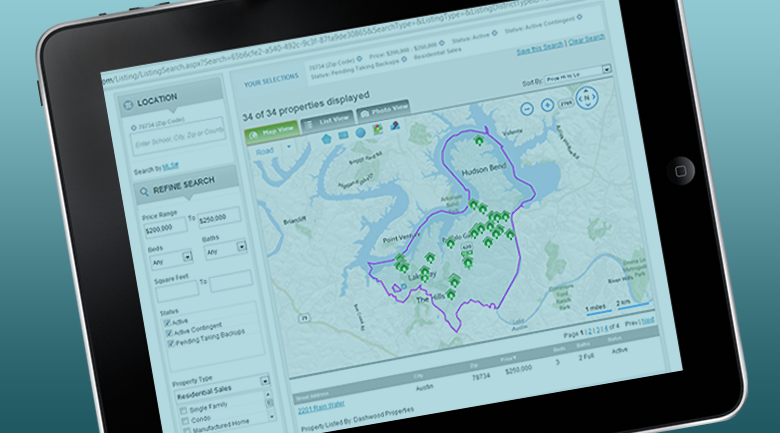 Over the years, real estate blogging has changed from an experiment to a standard marketing tool and chosen platforms have evolved as well. Many Realtors choose to own and host their own blog on platforms like WordPress.org while others opt for community hosted blogs like ActiveRain.com.
Over the years, real estate blogging has changed from an experiment to a standard marketing tool and chosen platforms have evolved as well. Many Realtors choose to own and host their own blog on platforms like WordPress.org while others opt for community hosted blogs like ActiveRain.com.
ActiveRain’s long evolution
ActiveRain has changed through several iterations over the years ranging from its initial goal of Realtors blogging for consumers on a high ranking site, to a more internal real estate network with Realtors writing for points with other Realtors commenting (thus earning more points). Many see the network as a water cooler of sorts for the real estate industry.
The real estate network made headlines in July of 2010 for going back on its original promise to never charge founding users and was sold this May to MarketLeader and the blogosphere lit up when Jonathan Washburn, CEO and co-founder said goodbye as the company’s leader.
Format and culture changes over the years
The company has changed format over the years and the culture has shifted right along with it. As a pay-to-play network, and with the shift, some users have chosen to leave and jump ship for their own site or for a competitor like Posterous, while others have remained highly dedicated to the network.
Top bloggers in 2009 versus today
In October 2009, we profiled ActiveRain.com bloggers, outlining the 51 Top Ranking ActiveRain.com Real Estate Blogs according to the blogger in every state with the highest number of points.
While several well known real estate bloggers like Lenn Harley and Kristal Kraft have remained active in the real estate network, we took a look at the current state of the top 51 list and uncovered that 32% of the bloggers originally profiled who once were extremely competitive for the top spot in their state have not blogged in the last 30 days, with one in five having gone completely dormant.
The American Genius is news, insights, tools, and inspiration for business owners and professionals. AG condenses information on technology, business, social media, startups, economics and more, so you don’t have to.









































Eric Hempler
July 26, 2011 at 7:16 am
To me it always seemed like ActiveRain was a way to interact with other agents and not a lead generating tool. Why pay a monthly subscription to it when you can have a free blog? Then if you go to a self hosted route you have even more freedom to SEO the sucker.
Park City Home Search
July 26, 2011 at 9:02 am
Might as well use the information you write to generate leads or else you are just wasting your time. Although there is significant link value from AR links.
sfvrealestate
July 26, 2011 at 11:52 am
I think all the top bloggers are now blogging for Agent Genius!
Bob Stewart
July 26, 2011 at 5:52 pm
My hunch tells me that many of those bloggers that are dormant have probably moved on to their own wordpress sites…..although some of them could be completely out of the business. Heck, over two years many real estate agents fall out of the business.
I suppose that means that 68% of them are still blogging, which is WAY higher than you would find for blogs in general across the internet. I believe the built in community at ActiveRain acts as a support network to keep people engaged with their blog. Certainly nothing wrong with that.
If you were to take a general outlook at the real estate business in general, I wonder if more than 32% of people are no longer in the business from October of 2009. My guess is yes…..which means our bloggers succeed at a higher rate than an average person not blogging? Who knows…….
Are you really using a headline for July of 2011 that is based on a study you did in October of 2009? Sensational stuff…..I love it!
Bob Stewart
July 26, 2011 at 5:54 pm
And if bloggers can start out and get their feet wet and then move on to write for great industry sites like AgentGenius, we love that! Tons of extremely talented writers all over the RE.net, no question!
Matt
July 26, 2011 at 10:47 pm
I changed my activerain blogging strategy when the latest changes to the google search algorithm (the Panda updated) went into effect.
I used to duplicate much of my local content and tweak it slightly for activerain, but with google now seriously frowning upon duplicate content, it seemed better to try and put SEO juice back into my main website.
End result is I blog at active rain a whole lot less than I used to.
Cheers,
Matt
Lyn Sims
July 31, 2011 at 10:50 am
Who's Agent Genius? 😉 I just disagree & I am sure that a certain portion of the top bloggers have moved on thru regular attrition. A few I know of personally stopped selling real estate, moved to a different part of the country and are ??. What they still wrote in the past is good quality material. Your survey seemed flawed as Bob Stewart mentions as it is so ancient. 2 months ago is agent in blogging standards.
There are plenty of active agents that still produce great posts but each agent has their maximum content ability. Kristal Kraft hasn't posted for over a month – that's not exactly active.
Angie @AgentKnowHow
August 2, 2011 at 8:09 pm
I created my AR profile years ago and one of the things that frustrated me then was how it turned into a breeding ground for xyz solicitation. I know AR was not at fault, but I was initially discouraged. I don't understand the points system. Are the points redeemable? The overall layout of the Blogs themselves is very "old school." With self-hosted wordpress sites and Facebook Groups and I dare say other networks like twitter and LinkedIn, the competiton for my attention, time and budget is pretty steep. Lately, I have read a couple of agents complain that AR was down. Not sure what's the cause of this downtime, but I believe the company needs a clearly defined direction if it intends to survice the social world of 2011 and beyond.
Andrew Mooers
December 17, 2023 at 7:51 pm
Active Rain has gone through a lot of changes over the years and platform sales. Some bloggers are MIA because they retired and platform has aged or members plow the time into their own blog channels.